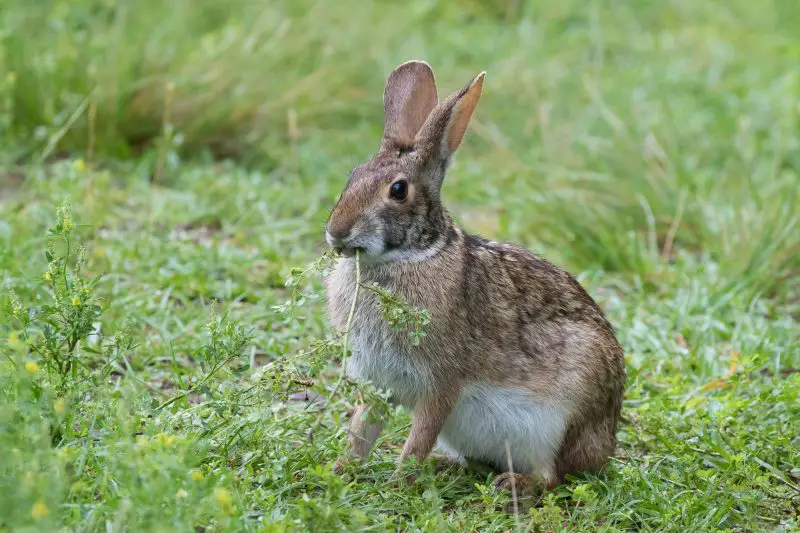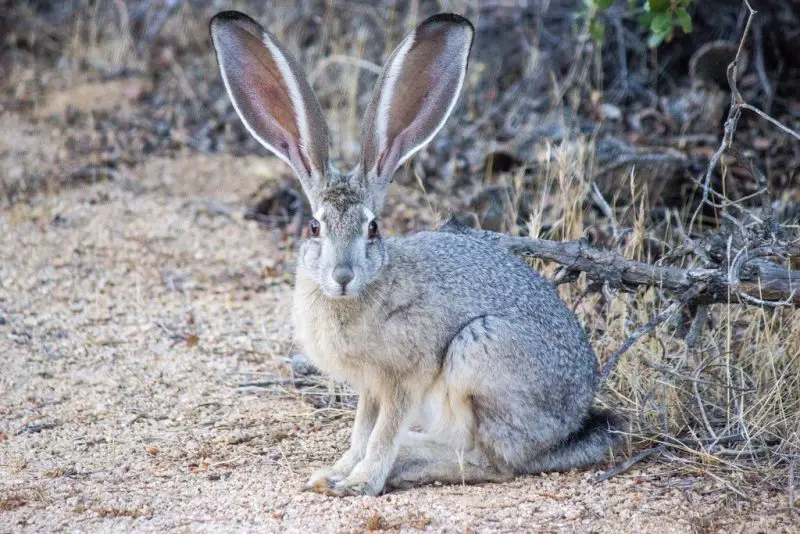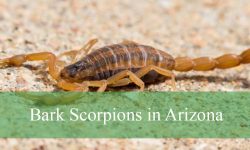Rabbits in Oklahoma are common and play an important role in the state’s ecosystems. With diverse habitats ranging from wetlands to dry plains, Oklahoma supports several rabbit species. Knowing how to identify these rabbits helps both wildlife enthusiasts and hunters.
This article covers the four main types of rabbits found in Oklahoma. Each species has unique features, behaviors, and habitats. Clear descriptions and pictures are provided to help you recognize them in the wild.
Learning about rabbits in Oklahoma offers insight into their habits and how they survive in different environments across the state. This knowledge is useful for anyone interested in local wildlife or outdoor activities.
Common Rabbits Found in Oklahoma
Eastern Cottontail (Sylvilagus floridanus)

The Eastern Cottontail is the most common rabbit species in Oklahoma and across much of the eastern and central United States. It has a distinctive, fluffy white tail resembling a cotton ball, which is where it gets its name. Its fur is primarily brown with some gray and rusty tones, providing excellent camouflage in grassy and brushy areas. This rabbit has large hind feet and long ears, helping it detect predators and move quickly.
In terms of size, the Eastern Cottontail typically weighs between 2 to 4 pounds and measures about 15 to 18 inches in length. It is a medium-sized rabbit compared to other North American species. This rabbit is primarily crepuscular, meaning it is most active during dawn and dusk. It is highly alert and uses quick, zigzag running to escape threats.
Eastern Cottontails are herbivores, feeding mainly on grasses, herbs, twigs, and leaves. In winter, when green vegetation is scarce, they may eat bark and buds of shrubs and trees. Their diet changes seasonally depending on availability. They are important prey for many predators, including hawks, foxes, coyotes, and bobcats.
Habitat-wise, Eastern Cottontails thrive in open areas with abundant cover such as fields, meadows, edges of forests, and suburban gardens. In Oklahoma, they are widespread throughout the state but are especially common in eastern and central regions where such habitats dominate. Their adaptability to human-altered environments makes them one of the most frequently seen wild rabbits in the state.
Swamp Rabbit (Sylvilagus aquaticus)

The Swamp Rabbit is a larger and more aquatic-adapted rabbit species found mainly in the southeastern parts of Oklahoma, particularly in wetland and riparian zones. This rabbit is noticeably larger than the Eastern Cottontail, often weighing 4 to 7 pounds and measuring around 18 to 22 inches long. Its fur tends to be a darker brown, which helps it blend into swampy, forested habitats.
Swamp Rabbits are strong swimmers, an unusual trait for rabbits, allowing them to escape predators by diving into water. Their behavior is often nocturnal or crepuscular, and they rely heavily on dense vegetation near rivers, swamps, and marshes for shelter. Unlike other rabbits, Swamp Rabbits often forage near water, feeding on aquatic plants, grasses, and bark.
Their diet consists mainly of grasses, sedges, and leaves, but they will also consume bark, especially during colder months when other food is scarce. Because they spend much of their time in watery environments, they may feed on plant species that other rabbits do not typically eat.
In Oklahoma, Swamp Rabbits are mostly confined to the southeastern corner of the state where river bottoms and swamps provide ideal habitat. They are less common and less widely distributed than Eastern Cottontails but play an important ecological role in wetland ecosystems.
Desert Cottontail (Sylvilagus audubonii)

The Desert Cottontail inhabits the drier, more open regions of western and northwestern Oklahoma, where it is adapted to arid and semi-arid conditions. Its fur is lighter, often a pale brown or grayish color, allowing it to blend into the sandy and rocky terrain typical of its habitat. It has a white underside and a characteristic white fluffy tail similar to other cottontails.
This species is medium-sized, generally weighing between 2 and 3.5 pounds with a length of 14 to 17 inches. Desert Cottontails are primarily crepuscular and nocturnal, avoiding the heat of the day by resting in burrows or dense vegetation. They are agile and fast runners, using speed to evade predators like hawks, coyotes, and snakes.
Their diet is herbivorous and consists mostly of grasses, herbs, and desert shrubs. In drought conditions, they may consume cactus pads and other succulent plants, showcasing their adaptability to harsh environments. Water conservation is critical, and they obtain much of their moisture from their food.
In Oklahoma, Desert Cottontails are found predominantly in the western part of the state, where the terrain shifts to plains and rocky outcrops. Their distribution corresponds closely with drier climates and open grassland or scrub habitats.
Black-tailed Jackrabbit (Lepus californicus)

The Black-tailed Jackrabbit is actually a hare, not a true rabbit, and is notable for its large size, long legs, and very long ears that help regulate body temperature in Oklahoma’s hotter climate. Adult jackrabbits can weigh from 5 to 8 pounds and measure 18 to 24 inches long, making them one of the largest lagomorphs in the state. They have brownish-gray fur with black tips on their tails and ears.
Unlike rabbits, Black-tailed Jackrabbits do not dig burrows but instead use dense vegetation and rocky crevices for shelter. They are mostly crepuscular but can be active during the day, especially in cooler weather. They rely on their incredible speed and powerful hind legs to escape predators, capable of running at speeds up to 40 mph.
Their diet includes grasses, shrubs, and cactus, and they are well adapted to dry environments. They often feed at night or early morning to conserve moisture and avoid the daytime heat. Like other hares, their young are born fully furred and with eyes open, ready to move shortly after birth.
In Oklahoma, Black-tailed Jackrabbits are common in the western and southwestern parts of the state, where open grasslands and semi-desert habitats provide ideal conditions. They are a familiar sight in prairies, farmlands, and desert-like areas throughout these regions.
Time and Places to See Rabbits, and Hunting Tips in Oklahoma
In Oklahoma, rabbits are most active during the early morning hours just before sunrise and again in the late afternoon around dusk. These crepuscular habits make dawn and dusk the best times for spotting or hunting rabbits. The state’s diverse habitats provide ample opportunities to find different rabbit species: Eastern Cottontails and Swamp Rabbits are often seen in dense brushy areas, wetlands, and river bottoms in eastern and southeastern Oklahoma. Desert Cottontails and Black-tailed Jackrabbits prefer the open grasslands, prairies, and drier regions mainly in western Oklahoma.
For hunters, it’s important to know the state’s hunting seasons, which typically run from October 1 through March 15. This period aligns well with the rabbits’ peak activity during cooler months. Successful hunting often involves moving quietly along edges of fields or near water sources where rabbits feed and seek cover. Using natural cover such as shrubs and tall grass can help you get closer without disturbing the animals. Since rabbits have keen senses and quick reflexes, patience and stillness are key. Additionally, hunting early or late in the day when rabbits are most active increases your chances of success. Always follow Oklahoma’s hunting regulations and respect bag limits to ensure sustainable rabbit populations.






